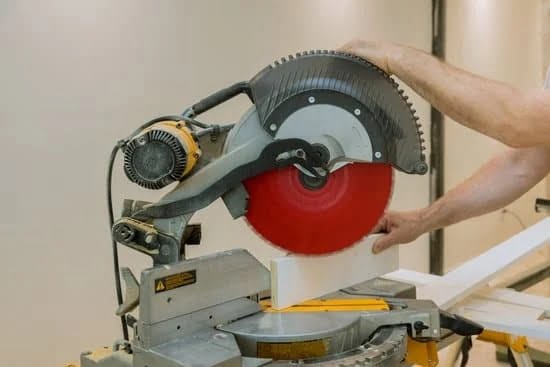If you’re wondering how to price used woodworking tools, it’s important to have a good understanding of the market for these items. Whether you’re looking to sell some of your own tools or purchase used ones for your woodworking projects, knowing the factors that influence pricing can help you make informed decisions. In this article, we’ll explore the various aspects of pricing used woodworking tools and provide tips for maximizing their resale value.
When it comes to pricing used woodworking tools, there are several factors to consider. Understanding the market demand for specific tools, as well as their condition and age, can greatly impact their value. By researching comparable listings and prices, assessing the condition of the tools, and determining their depreciation value, you can set a competitive price that reflects both their worth and market trends.
Researching comparable listings and prices is an essential step in determining the appropriate price for used woodworking tools. Factors such as brand reputation, tool condition, and included accessories can all influence pricing. Additionally, assessing the overall depreciation value of the tools over time will help you set a fair price that considers their age and wear. In the following sections, we’ll delve into these factors in more detail to help you confidently price your woodworking tools.
Factors to Consider When Pricing Used Woodworking Tools
When it comes to pricing used woodworking tools, there are several factors to consider in order to ensure that you are setting a competitive and reasonable price for your items. Understanding these factors will not only help you attract potential buyers, but also maximize the resale value of your woodworking tools. Here are some key factors to keep in mind when pricing used woodworking tools:
1. Brand and Quality: The brand and quality of the woodworking tool can greatly impact its resale value. High-quality, well-known brands are generally more sought after in the used market, and thus can be priced higher compared to lesser-known or lower-quality brands.
2. Age and Usage: The age and level of usage of the woodworking tools will also play a significant role in determining their pricing. Older tools with minimal wear and tear might retain more value compared to newer tools that have been heavily used.
3. Supply and Demand: Understanding the current supply and demand for specific types of woodworking tools in the market is crucial for pricing. If there is high demand and limited supply for a certain tool, you may be able to set a higher price.
These factors should guide you on how to price used woodworking tools effectively. By taking them into consideration, you can ensure that you’re setting a fair and competitive price that takes into account the condition, brand, age, and demand for your woodworking tools.
Researching Comparable Listings and Prices
When it comes to pricing used woodworking tools, one of the most important factors to consider is researching comparable listings and prices. By understanding the market and what similar tools are selling for, you can ensure that you are pricing your tools competitively while still maximizing your potential profit.
Utilize Online Marketplaces and Forums
One of the best ways to research comparable listings and prices for used woodworking tools is by utilizing online marketplaces and forums. Websites such as eBay, Craigslist, and Facebook Marketplace provide a wealth of information on what similar tools are being listed for and how much they are actually selling for. Additionally, woodworking forums and communities can also provide valuable insight into pricing trends and what buyers are willing to pay.
Consider Local Market Conditions
In addition to researching online listings, it’s important to consider local market conditions when pricing used woodworking tools. Factors such as supply and demand, geographical location, and the availability of certain tool brands can all impact pricing. For example, if a particular brand of woodworking tool is in high demand in your area, you may be able to price it higher than average.
Take Note of Pricing Trends
Lastly, when researching comparable listings and prices, take note of any pricing trends that you observe. Are certain types or brands of woodworking tools consistently selling for more than others? Are there seasonal fluctuations in pricing? By paying attention to these trends, you can better understand how to price your used woodworking tools for maximum profit.
Assessing the Condition of the Woodworking Tools
When pricing used woodworking tools, one of the most important factors to consider is the condition of the tools. The condition will heavily influence the value of the tools and can ultimately determine how much they can be sold for. Here are some key points to consider when assessing the condition of woodworking tools:
- Physical Condition: Inspect the tools for any signs of wear and tear, such as scratches, dents, or rust. Check for any damage to the handles, blades, or other parts of the tools.
- Functional Condition: Test each tool to ensure that it is in good working order. This includes checking for things like blade sharpness, motor functionality, and overall performance.
- Completeness: Make sure that all parts and accessories that originally came with the tools are still present. Missing parts can significantly decrease the value of woodworking tools.
Once you have thoroughly assessed the condition of the woodworking tools, you can use this information to help determine their fair market value. Keep in mind that potential buyers will also be inspecting the condition of the tools before making a purchase, so being upfront about any flaws or issues is crucial in establishing trust with buyers.
Researching similar listings for used woodworking tools will also give you an idea of how much similar items with similar conditions are currently being sold for in the market. By doing so-alongside careful assessment-you can effectively determine a competitive price point for your used woodworking tools.
Determining the Depreciation Value of Woodworking Tools
When pricing used woodworking tools, it’s essential to consider the depreciation value of the tools. Depreciation refers to the decrease in an item’s value over time due to wear and tear, obsolescence, or other factors. Understanding the depreciation value of your woodworking tools will help you set a fair and competitive price for potential buyers.
One way to determine the depreciation value of woodworking tools is to consider their age and condition. Generally, older tools with more wear and tear will have a higher depreciation value compared to newer, well-maintained tools. It’s important to assess any visible damage, rust, or malfunctioning parts that may affect the overall value of the tools.
Another factor to consider when determining depreciation value is the original purchase price of the woodworking tools. As a general rule, most woodworking tools depreciate in value by 10-20% each year. However, this percentage can vary depending on the brand, quality, and demand for specific types of woodworking tools.
It’s also helpful to research comparable listings and prices for similar used woodworking tools on online marketplaces or at local tool shops. This will give you a better idea of how much similar items are selling for in the current market, allowing you to adjust your pricing strategy accordingly.
| Factors | Considerations |
|---|---|
| Age and Condition | Determine how these aspects affect depreciation. |
| Purchase Price | Evaluate its influence on depreciation rate. |
| Market Research | Assess similar listings and prices. |
Setting a Competitive Price for Used Woodworking Tools
When it comes to selling used woodworking tools, setting a competitive price is crucial in order to attract potential buyers and maximize resale value. Here are some important factors to consider when determining the right price for your used woodworking tools.
Consider Current Market Conditions
One of the first steps in setting a competitive price for used woodworking tools is to understand the current market conditions. Is there high demand for the particular tool you are selling? What are similar used woodworking tools being sold for in the market? By researching and understanding the current market conditions, you can better assess how to price your used woodworking tools competitively.
Evaluate Tool Brand and Quality
The brand and quality of your used woodworking tools can greatly influence their resale value. High-quality, well-known brands may command a higher price in the secondhand market compared to lesser-known or lower-quality brands. Consider the brand reputation and overall condition of your woodworking tools when setting a competitive price.
Factor in Depreciation and Condition
Depreciation is an important consideration when pricing used woodworking tools. Evaluate the age and condition of the tools, as well as any wear and tear they may have sustained over time. Factoring in depreciation will help you set a fair and competitive price that reflects the true value of your used woodworking tools.
By taking into account current market conditions, tool brand and quality, as well as depreciation and condition, you can effectively set a competitive price for your used woodworking tools. This strategic approach will not only attract potential buyers but also ensure that you maximize the resale value of your woodworking equipment.
Negotiating the Sale of Used Woodworking Tools
When negotiating the sale of used woodworking tools, it’s important to approach the process strategically in order to get the best value for your items. One key aspect to keep in mind during negotiations is to have a clear understanding of the market for used woodworking tools, as well as an awareness of the factors that can affect pricing. By doing so, sellers can effectively navigate discussions with potential buyers and secure a fair deal.
Researching comparable listings and prices is crucial when negotiating the sale of used woodworking tools. This involves looking at similar items that are currently on the market or have recently sold to gain insights into what price range is reasonable. By knowing the going rates for comparable tools, sellers can enter negotiations with realistic expectations and leverage this knowledge to support their asking price.
Assessing the condition of the woodworking tools is another key factor that comes into play during negotiations. The better the condition of the tools, the stronger position a seller will have when discussing pricing with potential buyers. It’s important to accurately communicate and demonstrate the condition of the tools to interested parties in order to justify the asking price and build trust.
| Factors | Considerations |
|---|---|
| Market Trends | When negotiating, be aware of current market trends for used woodworking tools. |
| Comparable Prices | Research similar listings to understand what prices are reasonable for your tools. |
| Tool Condition | Demonstrate and communicate tool condition accurately to influence negotiations positively. |
Tips for Maximizing the Resale Value of Woodworking Tools
When it comes to selling used woodworking tools, maximizing the resale value is essential for getting the best return on your investment. There are several tips and strategies that can help ensure you get the most money for your tools.
One of the most important factors in maximizing the resale value of woodworking tools is to keep them in good condition. Regular maintenance and cleaning can go a long way in preserving the quality and functionality of the tools. Potential buyers are more likely to pay a higher price for tools that have been well taken care of.
Another tip for maximizing resale value is to highlight any unique or high-quality features of the woodworking tools. If your tools have any special accessories, attachments, or features that make them stand out from others on the market, be sure to emphasize these when listing them for sale. This can make your tools more desirable to potential buyers and justify a higher price.
Lastly, investing a little time and effort into presentation can also help maximize the resale value of woodworking tools. Take clear, high-quality photos of the tools from multiple angles and provide detailed descriptions in your listings. This can help build trust with potential buyers and showcase the value of your tools, ultimately leading to a higher selling price.
By following these tips for maximizing resale value, you can increase the likelihood of selling your used woodworking tools at a competitive price and maximize your returns.
Finalizing the Sale and Ensuring Customer Satisfaction
In conclusion, pricing used woodworking tools requires careful consideration of several key factors in order to ensure a successful sale and customer satisfaction. Understanding the market for used woodworking tools is essential, as it allows sellers to gauge demand and set competitive prices. Factors such as brand reputation, age, and condition of the tools must be taken into account when determining their value. Researching comparable listings and prices is crucial for setting a fair and attractive price for potential buyers.
Assessing the condition of the woodworking tools is equally important, as it directly impacts their value. Sellers should thoroughly inspect their tools for any damage or wear and tear, and be transparent about their condition when listing them for sale. Depreciation value also plays a significant role in pricing used woodworking tools, as it reflects the decrease in value over time due to use and age.
Setting a competitive price is essential for attracting buyers and negotiating the sale of used woodworking tools. Sellers should be open to reasonable offers while also ensuring that they receive fair compensation for their items. Finally, maximizing the resale value of woodworking tools requires proper maintenance, presentation, and marketing tactics to attract potential buyers and ensure customer satisfaction throughout the transaction process.
Ultimately, through thorough research, assessment of condition, depreciation value considerations, competitive pricing strategies, successful negotiations, and attentive customer service throughout the sales process, sellers can effectively price and sell their used woodworking tools while leaving customers satisfied with their purchase. Following these guidelines will help sellers navigate the process of pricing used woodworking tools while maximizing their resale value.
Frequently Asked Questions
What Is the Most Used Tool in a Wood Shop?
The most used tool in a wood shop is likely the table saw. It is versatile and efficient for making straight cuts, which is a fundamental part of woodworking.
How to Get Free Woodworking Tools?
One way to get free woodworking tools is to look for local community workshops or maker spaces that offer tool lending libraries or access to shared tools. Another option is to join online forums or groups where woodworkers may give away or sell their unused tools.
What Is the Oldest Woodworking Tool?
The oldest woodworking tool is believed to be the bow drill, which dates back thousands of years and was used by ancient civilizations for drilling holes in wood. This simple yet effective tool has stood the test of time and remains a valuable part of woodworking history.

Hi everyone! I’m a woodworker and blogger, and this is my woodworking blog. In my blog, I share tips and tricks for woodworkers of all skill levels, as well as project ideas that you can try yourself.





